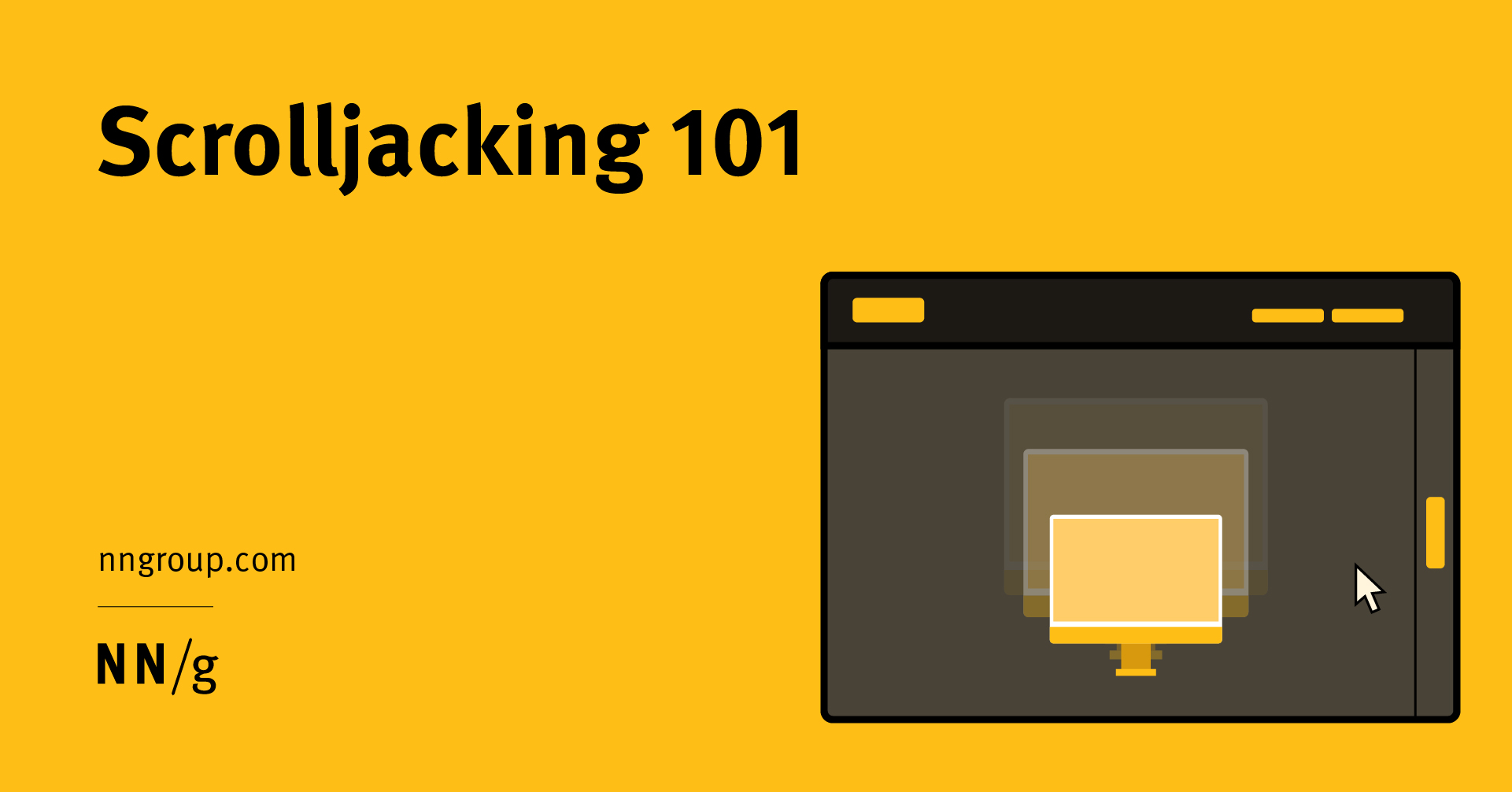Scrolljacking 101

Scrolljacking 101
Summary: Scrolljacking is a design trend that alters the normal pace or direction of scrolling on a website. While it can offer functional value, it also presents significant usability risks, including threats to user control, discoverability, attention, efficiency, and task success. To minimize these risks, businesses should carefully consider the trade-offs between scrolljacking and user experience factors such as cognitive load and efficiency.
Introduction: Scrolling is a fundamental user interaction that allows users to view content that extends beyond the screen height. Scrolljacking, on the other hand, changes the expected pace or direction of scrolling, deviating from established interaction conventions. This recent design trend has been found to have negative impacts on user control, freedom, discoverability, attention, efficiency, and task success.
What Is Scrolljacking? Users have strong mental models around scrolling, expecting a consistent vertical scroll at a rate that corresponds to their physical interaction with their input device. The scroll speed can be adjusted on most operating systems, but it remains consistent across applications. Scrolljacking disrupts this consistency and can create confusion for users.
Usability Risks: Usability testing has shown that scrolljacking introduces several risks to the user experience. These include a loss of user control, as users are unable to navigate through content at their desired pace. Discoverability is also affected, as unexpected scrolling behavior can prevent users from easily finding desired information. Users' attention is divided between the content and the scrolling mechanism, reducing their ability to focus on the task at hand. Additionally, scrolljacking can impede efficiency, as users may need to spend more time to complete tasks that would otherwise be quicker with traditional scrolling.
Minimizing Usability Risks: Before implementing scrolljacking, businesses should carefully consider the trade-offs. The functional value provided by scrolljacking should be weighed against the potential negative impacts on usability factors such as cognitive load, control, and efficiency. It may be necessary to optimize the design and implementation to minimize these risks while still achieving the desired functional benefits.
In conclusion, while scrolljacking can offer unique and visually engaging experiences, it should be approached with caution. By considering user expectations and the potential usability risks, businesses can make informed decisions about incorporating scrolljacking into their website designs.